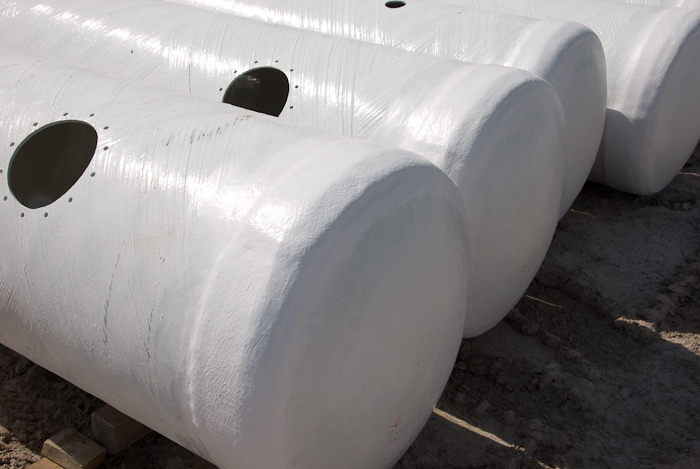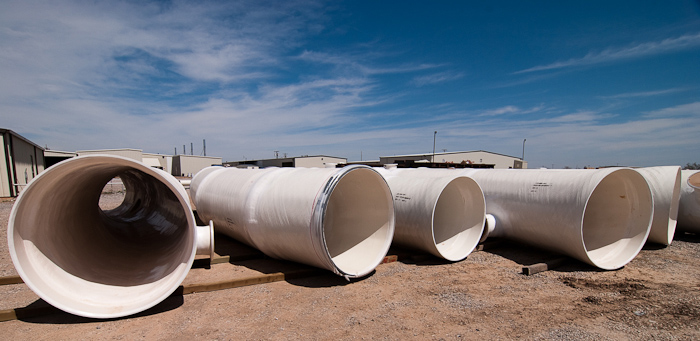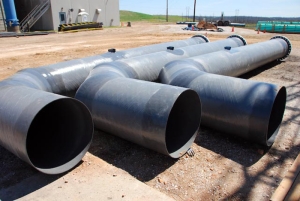Choosing Corrosion Resistant Resin: 11 Things You Should Know
 Fiber Reinforced Polymers (FRP) use has grown tremendously over the past seven decades in oil and gas, chemical processing, pulp and paper, mining and minerals, wastewater treatment, water treatment, desalination, and power generation—to name a few. One of the primary reasons FRP has gained so much traction is that it has superior corrosion resistance when compared to other construction materials such as stainless steels, carbon steels, titanium, aluminum, and nickel alloys. That being said, there are a wide range of corrosive environments throughout many industries and as such special requirements must be taken into consideration when designing/formulating FRP to endure optimal performance.
Fiber Reinforced Polymers (FRP) use has grown tremendously over the past seven decades in oil and gas, chemical processing, pulp and paper, mining and minerals, wastewater treatment, water treatment, desalination, and power generation—to name a few. One of the primary reasons FRP has gained so much traction is that it has superior corrosion resistance when compared to other construction materials such as stainless steels, carbon steels, titanium, aluminum, and nickel alloys. That being said, there are a wide range of corrosive environments throughout many industries and as such special requirements must be taken into consideration when designing/formulating FRP to endure optimal performance.
When requesting corrosion resistant resin recommendations for FRP equipment applications, users or specifiers should be prepared to supply the following data:
- All chemicals to which the equipment will be exposed: feedstocks, intermediates, products and by-products, waste materials, and cleaning chemicals
- Normal operating concentrations of chemicals, maximum and minimum concentrations (including trace amounts)
- pH range of the system
- Normal operating temperatures of the equipment, maximum and minimum temperatures
- Duration of normal, maximum and upset operating temperatures
- Abrasion resistance and/or agitation requirements
- Equipment size
- Manufacturing methods
- Flame retardance requirements
- Thermal insulation requirements
- Vacuum Specifications
Source: Ashland Resin Selection Guide
Please contact us today to learn more.

 What is Flexural Modulus?
What is Flexural Modulus? According to the Composites Growth Initiative of the American Composites Manufacturing Association (ACMA), the Coefficient of Thermal Expansion is the change in length (or volume) per unit length (or volume) produced by a one degree Celsius rise in temperature.
According to the Composites Growth Initiative of the American Composites Manufacturing Association (ACMA), the Coefficient of Thermal Expansion is the change in length (or volume) per unit length (or volume) produced by a one degree Celsius rise in temperature. Every year there are technological advancements. New materials are available today that once were just an idea or considered novel. In
Every year there are technological advancements. New materials are available today that once were just an idea or considered novel. In  CNC stands for Computer Numeric Control. CNC Machining is a process used in the manufacturing sector that involves the use of computers to control machine tools. Tools that can be controlled in this manner include lathes, mills, routers and grinders.
CNC stands for Computer Numeric Control. CNC Machining is a process used in the manufacturing sector that involves the use of computers to control machine tools. Tools that can be controlled in this manner include lathes, mills, routers and grinders. The CNC process is relatively straightforward. First, a CAD drawing is created (either 2D or 3D), second, a code is created that the CNC machine will understand. The program is loaded and finally an operator runs a test of the program to ensure there are no problems. This trial run is referred to as “cutting air” and it is an important step because any mistake with speed and tool position could result in a scraped part or a damaged machine.
The CNC process is relatively straightforward. First, a CAD drawing is created (either 2D or 3D), second, a code is created that the CNC machine will understand. The program is loaded and finally an operator runs a test of the program to ensure there are no problems. This trial run is referred to as “cutting air” and it is an important step because any mistake with speed and tool position could result in a scraped part or a damaged machine. The upfront cost of CNC machines can be steep, but the long-term advantages of
The upfront cost of CNC machines can be steep, but the long-term advantages of  Saves Time and Money—Modern design software allows the designer to simulate the manufacture of his/her idea. There is no need to make a prototype or a model. This saves time and money. One person can supervise many CNC machines as once they are programmed they can usually be left to work by themselves.
Saves Time and Money—Modern design software allows the designer to simulate the manufacture of his/her idea. There is no need to make a prototype or a model. This saves time and money. One person can supervise many CNC machines as once they are programmed they can usually be left to work by themselves. There are many
There are many 
 Fiber Reinforced Polymers (FRP) are unique composite materials in many respects. For starters, they can be formulated to be corrosion, abrasion, and UV resistant, as well as, smoke and fire retardant. FRP are often a cost-effective choice in many industrial applications; they have long life cycles and have demonstrated durability in stringent environments with reduced maintenance costs. Here are five reasons FRP stand out when compared to metals and metal alloys.
Fiber Reinforced Polymers (FRP) are unique composite materials in many respects. For starters, they can be formulated to be corrosion, abrasion, and UV resistant, as well as, smoke and fire retardant. FRP are often a cost-effective choice in many industrial applications; they have long life cycles and have demonstrated durability in stringent environments with reduced maintenance costs. Here are five reasons FRP stand out when compared to metals and metal alloys. There are many important predictors of service life in industrial chemical processes; for example, humidity, temperature, pressure, and stress. Similarly, chemical resistance is a key predictor of
There are many important predictors of service life in industrial chemical processes; for example, humidity, temperature, pressure, and stress. Similarly, chemical resistance is a key predictor of 



